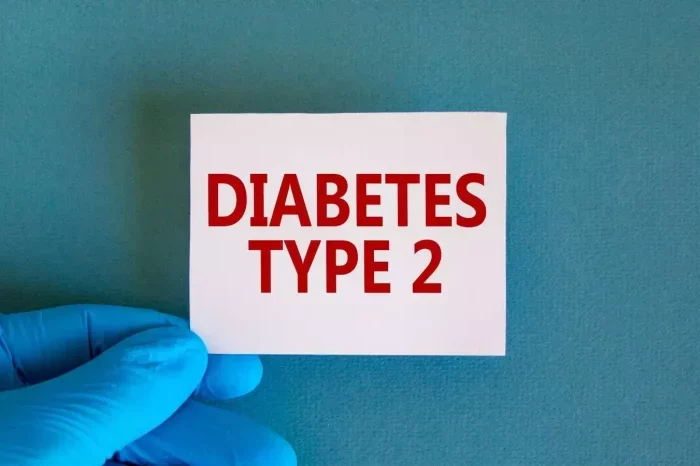Insulin, a hormone produced by the pancreas, plays a crucial role in regulating blood sugar levels in the body. In individuals with type 2 diabetes, insulin resistance or inadequate insulin production leads to elevated blood glucose levels, contributing to various symptoms and health complications. While much emphasis is placed on the consequences of high blood sugar, the effects of high insulin levels—often a consequence of prolonged insulin resistance—are equally significant and merit careful consideration.
Introduction to Insulin and Its Role in the Body
Insulin serves as a key regulator of glucose metabolism. When carbohydrates are consumed, they are broken down into glucose, which enters the bloodstream. In response, the pancreas releases insulin, allowing cells throughout the body to absorb glucose for energy production or storage. In type 2 diabetes, cells become resistant to insulin’s action, necessitating higher levels of insulin to achieve the same glucose-lowering effect. Over time, this can lead to hyperinsulinemia—a condition characterized by elevated insulin levels in the blood.
Mechanisms Underlying High Insulin Levels
Hyperinsulinemia primarily results from insulin resistance, where cells fail to respond adequately to insulin. This resistance prompts the pancreas to produce more insulin to compensate, leading to chronically elevated levels. Factors contributing to insulin resistance include genetic predisposition, obesity, sedentary lifestyle, and dietary habits, particularly those high in refined sugars and fats.
Symptoms of High Insulin Levels
Weight Gain and Difficulty Losing Weight
High insulin levels promote fat storage and inhibit fat breakdown. Individuals with hyperinsulinemia often struggle with weight gain, especially around the abdomen—a characteristic feature of insulin resistance. Despite efforts to reduce calorie intake and increase physical activity, weight loss may be challenging due to metabolic imbalances driven by elevated insulin.
Increased Hunger and Cravings
Insulin plays a role in regulating appetite by signaling satiety to the brain. Elevated insulin levels can disrupt this signaling, leading to increased hunger and cravings, particularly for carbohydrates and sugary foods. This cycle perpetuates overeating and exacerbates insulin resistance, creating a challenging environment for weight management and glucose control.
Fatigue and Energy Fluctuations
High insulin levels can disrupt energy metabolism, leading to fluctuations in energy levels throughout the day. Individuals may experience periods of fatigue, especially after meals high in carbohydrates, followed by brief bursts of energy as insulin levels spike and then decline. These energy fluctuations can impact daily activities and overall quality of life.
Skin Changes and Acanthosis Nigricans
Acanthosis nigricans is a skin condition characterized by dark, velvety patches often appearing in skin folds and creases. It is strongly associated with insulin resistance and hyperinsulinemia, particularly in individuals who are overweight or obese. Recognizing these skin changes can prompt early detection and management of underlying metabolic issues.
Polycystic Ovary Syndrome (PCOS) in Women
Women with hyperinsulinemia are at increased risk of developing polycystic ovary syndrome (PCOS), a hormonal disorder characterized by irregular menstrual cycles, ovarian cysts, and potential fertility issues. Insulin resistance contributes to elevated androgen levels, disrupting normal ovarian function and hormone balance.
High Blood Pressure (Hypertension)
Insulin resistance and hyperinsulinemia are closely linked to hypertension, a major risk factor for cardiovascular disease. Elevated insulin levels can lead to increased sodium retention and vascular stiffness, contributing to higher blood pressure levels over time. Managing insulin levels is therefore crucial in preventing and managing hypertension in individuals with type 2 diabetes.
Elevated Triglyceride Levels
Insulin plays a role in lipid metabolism, particularly in the synthesis and storage of triglycerides. Elevated insulin levels can lead to increased production of triglycerides by the liver and decreased clearance from the bloodstream, contributing to hypertriglyceridemia—a common lipid abnormality in individuals with insulin resistance and type 2 diabetes.
Low HDL Cholesterol Levels
High insulin levels can lower high-density lipoprotein (HDL) cholesterol levels, often referred to as “good” cholesterol. HDL cholesterol plays a critical role in cardiovascular health by transporting cholesterol away from arteries and back to the liver for excretion or recycling. Reduced HDL levels further increase cardiovascular risk in individuals with hyperinsulinemia.
Diagnosis and Management of Hyperinsulinemia
Diagnosing hyperinsulinemia involves assessing fasting insulin levels and glucose tolerance tests in conjunction with clinical symptoms and risk factors. Management strategies focus on addressing underlying insulin resistance through lifestyle modifications, including:
- Dietary Changes: Emphasizing whole foods, fiber-rich carbohydrates, lean proteins, and healthy fats while limiting sugars and refined carbohydrates.
- Physical Activity: Regular exercise improves insulin sensitivity, promotes weight loss, and enhances overall metabolic health.
- Weight Management: Achieving and maintaining a healthy weight reduces insulin resistance and lowers insulin requirements.
- Medications: In some cases, medications such as metformin or insulin-sensitizing agents may be prescribed to improve insulin sensitivity and regulate glucose levels.
See also: What Are Signs That Your Blood Sugar Is High
Conclusion
Hyperinsulinemia is a significant metabolic abnormality associated with insulin resistance and type 2 diabetes. Understanding the symptoms and consequences of high insulin levels is crucial for early detection and effective management of metabolic disorders. By addressing insulin resistance through lifestyle modifications and appropriate medical interventions, individuals can mitigate the risk of complications and improve overall health outcomes. Ongoing research into the mechanisms of insulin resistance and hyperinsulinemia will continue to inform clinical practices and therapeutic approaches, aiming to optimize care for patients with type 2 diabetes and related conditions.
In summary, while managing blood sugar levels remains paramount in diabetes care, attention to high insulin levels is equally essential for comprehensive management and prevention of long-term complications associated with insulin resistance.
Related topics:
For Preventing Type 2 Diabetes: A Comprehensive Guide

























